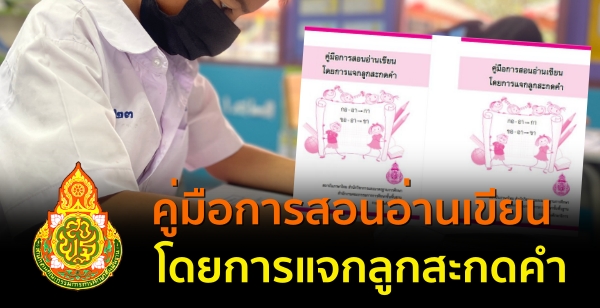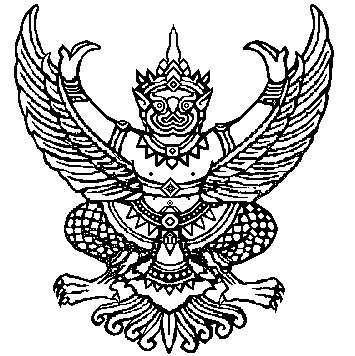ชื่อเรื่อง การพัฒนารูปแบบการจัดประสบการณ์การเรียนรู้เพื่อพัฒนาทักษะทางภาษา
สำหรับเด็กปฐมวัย ชั้นอนุบาลปีที่ 3
ผู้วิจัย นางสาวพัฒนินทร์ สรรพวรสถิตย์ วิทยฐานะ ครูชำนาญการพิเศษ
โรงเรียนอนุบาลเมืองใหม่ชลบุรี สังกัดองค์การบริหารส่วนจังหวัดชลบุรี
ปีที่วิจัย 2560
บทคัดย่อ
การวิจัยครั้งนี้เป็นการวิจัยเพื่อพัฒนารูปแบบการจัดประสบการณ์การเรียนรู้เพื่อพัฒนาทักษะทางภาษาสำหรับเด็กปฐมวัย ชั้นอนุบาลปีที่ 3 สรุปสาระที่ได้จากการวิจัย โดยมีวัตถุประสงค์ ดังนี้ (1) เพื่อศึกษาและวิเคราะห์ข้อมูลเกี่ยวกับทักษะทางภาษาสำหรับเด็กปฐมวัย ชั้นอนุบาลปีที่ 3 (2) เพื่อพัฒนารูปแบบการจัดประสบการณ์การเรียนรู้เพื่อพัฒนาทักษะทางภาษาสำหรับเด็กปฐมวัยชั้นอนุบาลปีที่ 3 (3) เพื่อทดลองใช้รูปแบบการจัดประสบการณ์การเรียนรู้เพื่อพัฒนาทักษะทางภาษาสำหรับเด็กปฐมวัย ชั้นอนุบาลปีที่ 3 (4) เพื่อประเมินประสิทธิผลการใช้รูปแบบการจัดประสบการณ์การเรียนรู้เพื่อพัฒนาทักษะทางภาษาสำหรับเด็กปฐมวัย ชั้นอนุบาลปีที่ 3 โดยมีวัตถุประสงค์ย่อยดังนี้ (4.1) การเปรียบเทียบทักษะการฟังของเด็กปฐมวัย ชั้นอนุบาลปีที่ 3 ที่ได้รับการจัดประสบการณ์
ตามรูปแบบการจัดประสบการณ์การเรียนรู้เพื่อพัฒนาทักษะทางภาษาสำหรับเด็กปฐมวัย ชั้นอนุบาลปีที่ 3 ก่อนและหลังการจัดประสบการณ์ตามรูปแบบการจัดประสบการณ์การเรียนรู้เพื่อพัฒนาทักษะทางภาษาสำหรับเด็กปฐมวัย ชั้นอนุบาลปีที่ 3 (4.2) การเปรียบเทียบทักษะการพูด ของเด็กปฐมวัยชั้นอนุบาลปีที่ 3 ที่ได้รับการจัดประสบการณ์ตามรูปแบบการจัดประสบการณ์การเรียนรู้เพื่อพัฒนาทักษะทางภาษาสำหรับเด็กปฐมวัย ชั้นอนุบาลปีที่ 3 ก่อนและหลังการจัดประสบการณ์ตามรูปแบบการจัดประสบการณ์การเรียนรู้เพื่อพัฒนาทักษะทางภาษาสำหรับเด็กปฐมวัย ชั้นอนุบาลปีที่ 3 (4.3)
การเปรียบเทียบทักษะการอ่าน ของเด็กปฐมวัยชั้นอนุบาลปีที่ 3 ที่ได้รับการจัดประสบการณ์
ตามรูปแบบการจัดประสบการณ์การเรียนรู้เพื่อพัฒนาทักษะทางภาษาสำหรับเด็กปฐมวัย ชั้นอนุบาลปีที่ 3 ก่อนและหลังการจัดประสบการณ์ตามรูปแบบการจัดประสบการณ์การเรียนรู้เพื่อพัฒนาทักษะทางภาษาสำหรับเด็กปฐมวัย ชั้นอนุบาลปีที่ 3 และ (4.4) การเปรียบเทียบทักษะการเขียน
ของเด็กปฐมวัย ชั้นอนุบาลปีที่ 3 ที่ได้รับการจัดประสบการณ์ตามรูปแบบการจัดประสบการณ์
การเรียนรู้เพื่อพัฒนาทักษะทางภาษาสำหรับเด็กปฐมวัย ชั้นอนุบาลปีที่ 3 ก่อนและหลัง
การจัดประสบการณ์ตามรูปแบบการจัดประสบการณ์การเรียนรู้เพื่อพัฒนาทักษะทางภาษา
สำหรับเด็กปฐมวัย ชั้นอนุบาลปีที่ 3 โดยมีขั้นตอนดังนี้ ขั้นตอนที่ 1 การวิจัย (Research: R1)
เพื่อศึกษาและวิเคราะห์ข้อมูลพื้นฐาน ขั้นตอนที่ 2 การพัฒนา (Development : D1) เพื่อพัฒนารูปแบบการจัดประสบการณ์การเรียนรู้เพื่อพัฒนาทักษะทางภาษาสำหรับเด็กปฐมวัย ชั้นอนุบาลปีที่ 3 ขั้นตอนที่ 3 การวิจัย (Research : R2) เพื่อทดลองใช้รูปแบบการจัดประสบการณ์การเรียนรู้
เพื่อพัฒนาทักษะทางภาษาสำหรับเด็กปฐมวัย ชั้นอนุบาลปีที่ 3 (Implement: I) และขั้นตอนที่ 4 การพัฒนา (Development: D2) เพื่อประเมินประสิทธิผลของรูปแบบการจัดประสบการณ์การเรียนรู้เพื่อพัฒนาทักษะทางภาษาสำหรับเด็กปฐมวัย ชั้นอนุบาลปีที่ 3 (Evaluation: E) สถิติที่ใช้
ในการวิเคราะห์ข้อมูลประกอบไปด้วยค่าเฉลี่ย ค่าร้อยละ ค่าสวนเบี่ยงเบนมาตรฐาน และสถิติทดสอบ ttest (Independent Sample t test)
ผลการวิจัยพบว่า
1. การศึกษาและวิเคราะห์ข้อมูลพื้นฐาน สภาพการจัดประสบการณ์การเรียนรู้ทางภาษาและข้อมูลทักษะภาษาแบบองค์รวมของเด็กปฐมวัย พบว่า การจัดประสบการณ์การเรียนรู้เพื่อพัฒนาทักษะทางภาษาสำหรับเด็กปฐมวัย ยังมีปัญหาและต้องการพัฒนาเพิ่มขึ้น โดยรวมอยู่ในระดับมาก การกำหนดนิยามพฤติกรรมบ่งชี้ในองค์ประกอบของทักษะทางภาษา พบว่า ทักษะทางภาษา
ควรประกอบด้วยความสามารถในการใช้ภาษาเพื่อการสื่อสารของเด็กปฐมวัย 4 ด้าน ได้แก่
ด้านการฟัง การพูด การอ่าน และการเขียน สำหรับแนวทางการพัฒนาทักษะทางภาษา
ควรจัดประสบการณ์ทางภาษาให้มีความหมายกับเด็ก ส่งเสริมการเรียนรู้ทางภาษาที่หลากหลาย
ให้เหมาะสมกับความแตกต่างของเด็กเป็นรายบุคคล เพื่อจะได้เรียนรู้ภาษาอย่างมีประสิทธิภาพ
มากขึ้นโดยใช้กิจกรรมการเรียนรู้ที่มีความท้าทาย จูงใจให้ร่วมปฏิบัติ และสามารถประสบความสำเร็จ
ในการทำกิจกรรมด้วยตนเอง ส่วนแนวทางการพัฒนาทักษะทางภาษาสำหรับเด็กปฐมวัย ให้บรรลุผลนั้น ควรจัดประสบการณ์โดยประยุกต์ใช้แนวคิดทฤษฎีการเรียนรู้ที่เกี่ยวข้องสนับสนุน ได้แก่
กรอบแนวคิดทฤษฎีพัฒนาการทางทางสติปัญญาของเพียเจท์ ทฤษฎีการเรียนรู้ทางวัฒนธรรมสังคมของไวก็อตสกี้ การจัดการเรียนรู้โดยใช้สมองเป็นฐาน การจัดประสบการณ์ภาษาแบบธรรมชาติ
การจัดประสบการณ์แบบเรกจิโอเอมีเลีย และแนวคิดการจัดประสบการณ์แบบไฮสโคป
2. รูปแบบการจัดประสบการณ์การเรียนรู้เพื่อพัฒนาทักษะทางภาษาสำหรับเด็กปฐมวัย
ชั้นอนุบาลปีที่ 3 พบว่า รูปแบบการจัดประสบการณ์การเรียนรู้เพื่อพัฒนาทักษะทางภาษาสำหรับเด็กปฐมวัย ชั้นอนุบาลปีที่ 3 มีองค์ประกอบ ได้แก่ 1) หลักการของรูปแบบ 2) วัตถุประสงค์ของรูปแบบ 3) ขั้นตอนการจัดประสบการณ์การเรียนรู้ และ 4) การวัดและประเมินผล โดยมีกระบวน
การจัดประสบการณ์ตามขั้นตอนการจัดประสบการณ์การเรียนรู้ ประกอบด้วย 5 ขั้น ได้แก่ 1)
ขั้นการสร้างความสนใจ 2) ขั้นเผชิญสถานการณ์ 3) ขั้นลงมือปฏิบัติ 4) ขั้นแลกเปลี่ยนและสรุปความรู้ และ 5) ขั้นการประยุกต์ใช้และประเมินผล ซึ่งผลการประเมินความเหมาะสมของรูปแบบ โดยผู้เชี่ยวชาญ พบว่า รูปแบบการจัดประสบการณ์การเรียนรู้ มีความเหมาะสมระดับมาก
3. เด็กปฐมวัยชั้นอนุบาลปีที่ 3 มีทักษะทางภาษาเพิ่มขึ้นหลังจากได้รับการจัดประสบการณ์การเรียนรู้ตามแนวคิดของรูปแบบการจัดประสบการณ์การเรียนรู้เพื่อพัฒนาทักษะทางภาษาสำหรับเด็กปฐมวัยชั้นอนุบาลปีที่ 3 อย่างมีนัยสำคัญทางสถิติที่ระดับ .05 ทั้งด้านการฟัง การพูด การอ่าน การเขียนและโดยรวมทั้ง 4 ด้าน แสดงว่าการจัดประสบการณ์การเรียนรู้ตามรูปแบบ
การจัดประสบการณ์การเรียนรู้เพื่อพัฒนาทักษะทางภาษาสำหรับเด็กปฐมวัย ชั้นอนุบาลปีที่ 3
ทำให้เด็กปฐมวัยมีทักษะทางภาษาเพิ่มขึ้น
4. ผลการประเมินประสิทธิผลการใช้รูปแบบการจัดประสบการณ์การเรียนรู้เพื่อพัฒนาทักษะทางภาษาสำหรับเด็กปฐมวัย ชั้นอนุบาลปีที่ 3 โดยมีวัตถุประสงค์ย่อยดังนี้
4.1 ทักษะการฟังของเด็กปฐมวัย ชั้นอนุบาลปีที่ 3 ที่ได้รับการจัดประสบการณ์
ตามรูปแบบการจัดประสบการณ์การเรียนรู้เพื่อพัฒนาทักษะทางภาษาสำหรับเด็กปฐมวัย ชั้นอนุบาลปีที่ 3 ก่อนและหลังการจัดประสบการณ์ตามรูปแบบการจัดประสบการณ์การเรียนรู้เพื่อพัฒนาทักษะทางภาษาสำหรับเด็กปฐมวัย ชั้นอนุบาลปีที่ 3 พบว่า มีความแตกต่างกันอย่างมีนัยสำคัญทางสถิติ
ที่ระดับ .05 แสดงว่า ทักษะการฟังหลังได้รับการจัดประสบการณ์ตามรูปแบบการจัดประสบการณ์การเรียนรู้เพื่อพัฒนาทักษะทางภาษาสำหรับเด็กปฐมวัย ชั้นอนุบาลปีที่ 3 สูงกว่าก่อนเรียน ทำให้เด็กปฐมวัย มีทักษะการฟังเพิ่มขึ้น
4.2 ทักษะการพูดของเด็กปฐมวัย ชั้นอนุบาลปีที่ 3 ที่ได้รับการจัดประสบการณ์
ตามรูปแบบการจัดประสบการณ์การเรียนรู้เพื่อพัฒนาทักษะทางภาษาสำหรับเด็กปฐมวัย ชั้นอนุบาลปีที่ 3 ก่อนและหลังการจัดประสบการณ์ตามรูปแบบการจัดประสบการณ์การเรียนรู้เพื่อพัฒนาทักษะทางภาษาสำหรับเด็กปฐมวัย ชั้นอนุบาลปีที่ 3 พบว่า มีความแตกต่างกันอย่างมีนัยสำคัญทางสถิติ
ที่ระดับ .05 แสดงว่า ทักษะการพูดหลังได้รับการจัดประสบการณ์ตามรูปแบบการจัดประสบการณ์การเรียนรู้เพื่อพัฒนาทักษะทางภาษาสำหรับเด็กปฐมวัย ชั้นอนุบาลปีที่ 3 สูงกว่าก่อนเรียน ทำให้เด็กปฐมวัยมีทักษะการพูดเพิ่มขึ้น
4.3 ทักษะการอ่านของเด็กปฐมวัยชั้นอนุบาลปีที่ 3 ที่ได้รับการจัดประสบการณ์ตามรูปแบบการจัดประสบการณ์การเรียนรู้เพื่อพัฒนาทักษะทางภาษาสำหรับเด็กปฐมวัย ชั้นอนุบาลปีที่ 3 ก่อนและหลังการจัดประสบการณ์ตามรูปแบบการจัดประสบการณ์การเรียนรู้เพื่อพัฒนา
ทักษะทางภาษาสำหรับเด็กปฐมวัย ชั้นอนุบาลปีที่ 3 พบว่า มีความแตกต่างกันอย่างมีนัยสำคัญ
ทางสถิติที่ระดับ .05 แสดงว่า ทักษะการอ่านหลังได้รับการจัดประสบการณ์ตามรูปแบบการจัดประสบการณ์การเรียนรู้เพื่อพัฒนาทักษะทางภาษาสำหรับเด็กปฐมวัย ชั้นอนุบาลปีที่ 3 สูงกว่า
ก่อนเรียน ทำให้เด็กปฐมวัยมีทักษะการอ่านเพิ่มขึ้น
4.4 ทักษะการเขียนของเด็กปฐมวัยที่ได้รับการจัดประสบการณ์ตามรูปแบบ
การจัดประสบการณ์การเรียนรู้เพื่อพัฒนาทักษะทางภาษาสำหรับเด็กปฐมวัย ชั้นอนุบาลปีที่ 3
ก่อนและหลังการจัดประสบการณ์ตามรูปแบบการจัดประสบการณ์การเรียนรู้เพื่อพัฒนาทักษะ
ทางภาษาสำหรับเด็กปฐมวัย ชั้นอนุบาลปีที่ 3 พบว่า มีความแตกต่างกันอย่างมีนัยสำคัญทางสถิติ
ที่ระดับ .05 แสดงว่า ทักษะการเขียนหลังได้รับการจัดประสบการณ์ตามรูปแบบการจัดประสบการณ์การเรียนรู้เพื่อพัฒนาทักษะทางภาษาสำหรับเด็กปฐมวัยชั้นอนุบาลปีที่ 3 สูงกว่าก่อนเรียน ทำให้เด็กปฐมวัยมีทักษะการเขียนเพิ่มขึ้น
Title The Development of Learning Model for Improving the Language Skills of the Nursery 3 Preschoolers
Researcher Miss Patthanin Sapphaworasatit Position: Teacher Level: Special Expertise, Anuban Muengmai Chonburi School, Chonburi Provincial
Administration Organization
Year of Study 2017
Abstract
This study is a research aiming to develop the learning model for improving the language skills of the nursery 3 preschoolers. The research objectives were 1) to study and analyze the data of nursery 3 preschoolers language skills 2) to develop the learning model for improving the language skills of the nursery 3 preschoolers
3) to implement the learning model for improving the language skills of the nursery 3 preschoolers and 4) to evaluate the effectiveness of using the learning model for improving the language skills of the nursery 3 preschoolers according to the sub objectives as follow; 4.1) compare the listening skills of nursery 3 preschoolers before and after using the learning model for improving the language skills 4.2) compare the speaking skills of nursery 3 preschoolers before and after using the learning model for improving the language skills 4.3) compare the reading skills of nursery 3 preschoolers before and after using the learning model for improving the language skills 4.4) compare the writing skills of nursery 3 preschoolers before and after using the learning model for improving the language skills. The research procedures were; step 1 Research: R1 - to study and analyze the basic information, Step 2 Development: D1 to develop the learning model for improving the language skills of nursery 3 preschoolers, Step 3 Research: R2 to implement the learning model for improving the language skills of nursery 3 preschoolers and Step 4 Development: D2 to evaluate the effectiveness of the learning model for improving the language skills of nursery 3 preschoolers. The statistic methods adopted in this research were mean, percentage, standard deviation and independent sample t-test.
The findings of the research reveal that;
1. The study and analysis of the basic information and the condition of organizing the learning model for improving the language skills of the preschoolers, still have some problems and need to be improved, wholly is at Much level. In regulating the behavioral indicators of the components of language skill, it reveals that the language skills should compose of the communication ability of those 4 skills; listening, speaking, reading and writing. The development model to improve language skill, the activities in the learning model should be meaningful, varieties and suitable to the individual differences that the learners could learn more efficiently.
The activities should be challenging and able to motivate them to participate in class and that they could succeed the goals by themselves.
To achieve improving the learners language skills, the learning model should be applied to the related learning theories such as conceptual theory if intelligence development of Piaget, the theory of cultural and social learning of Vygotsky, organizing learning using brain-based theory, natural language learning approach, learning technique according to Reggio Emilias theory and High/Scopes learning approach.
2. The study on the learning model for improving the language skills of the nursery 3 preschoolers reveals that there are elements as follow; 1) Principles of the model 2) Objectives of the model 3) Steps of organizing the learning activities and 4) Assessment and evaluation. The process of organizing the learning, there are 5 steps as follow; 1) Drawing an interest 2) Facing the situation 3) Doing the activities 4) Sharing and concluding and 5) Applying and evaluating. The result of an evaluation from the expert reveals that the appropriateness of the learning model is at Much level.
3. After implementing the learning model, the preschoolers of nursery 3 have the better language skills according to the development of learning model for improving the language skills of nursery 3 preschoolers at the .05 of significance. The levels of all their language skills; listening, speaking, reading and writing are higher that means organizing the language model helps improve the language skills of the nursery 3 preschoolers.
4. The results of evaluating the effectiveness of the learning model for improving the language skills for the nursery 3 preschoolers are as follow;
4.1 The levels of listening skills of the nursery 3 preschoolers before and after implementing the learning model for improving their language skills show the difference of significance at the .05 that means their listening skill after adopting the learning model is higher, their language skills are higher as well.
4.2 The levels of speaking skills of the nursery 3 preschoolers before and after implementing the learning model for improving their language skills show the difference of significance at the .05 that means their speaking skill after adopting the learning model is higher, their language skills are higher as well.
4.3 The levels of reading skills of the nursery 3 preschoolers before and after implementing the learning model for improving their language skills show the difference of significance at the .05 that means their reading skill after adopting the learning model is higher, their language skills are higher as well.
4.4 The levels of writing skills of the nursery 3 preschoolers before and after implementing the learning model for improving their language skills show the difference of significance at the .05 that means their writing skill after adopting the learning model is higher, their language skills are higher as well.



 ค้นหาทุกอย่างในเว็บครูบ้านนอก :
ค้นหาทุกอย่างในเว็บครูบ้านนอก :































